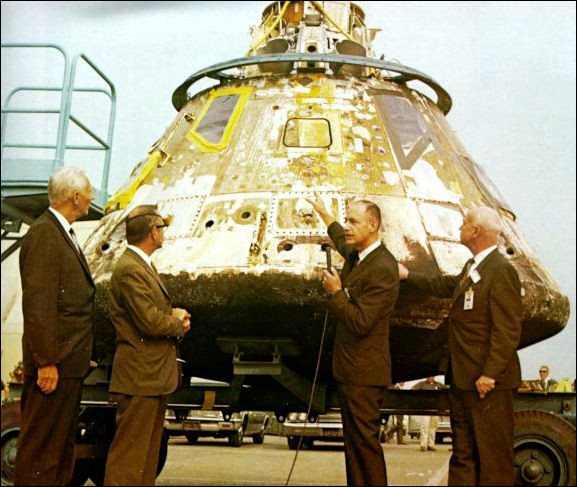
|
| Charred but perfectly intact, the CM here had passed its most severe test of reentry at a speed of 25,000 mph. From left, Ralph Ruud, Dale Myers, George Low, and Robert Gilruth. |

|
| Charred but perfectly intact, the CM here had passed its most severe test of reentry at a speed of 25,000 mph. From left, Ralph Ruud, Dale Myers, George Low, and Robert Gilruth. |

|
| This is the flight path of the Apollo 4 spacecraft above during its trial. First, its booster carried it to its peak altitude, and then its own big rocket accelerated it down into the atmosphere until it reached reentry speed. To an observer it would have appeared like a giant meteorite in the sky. |


